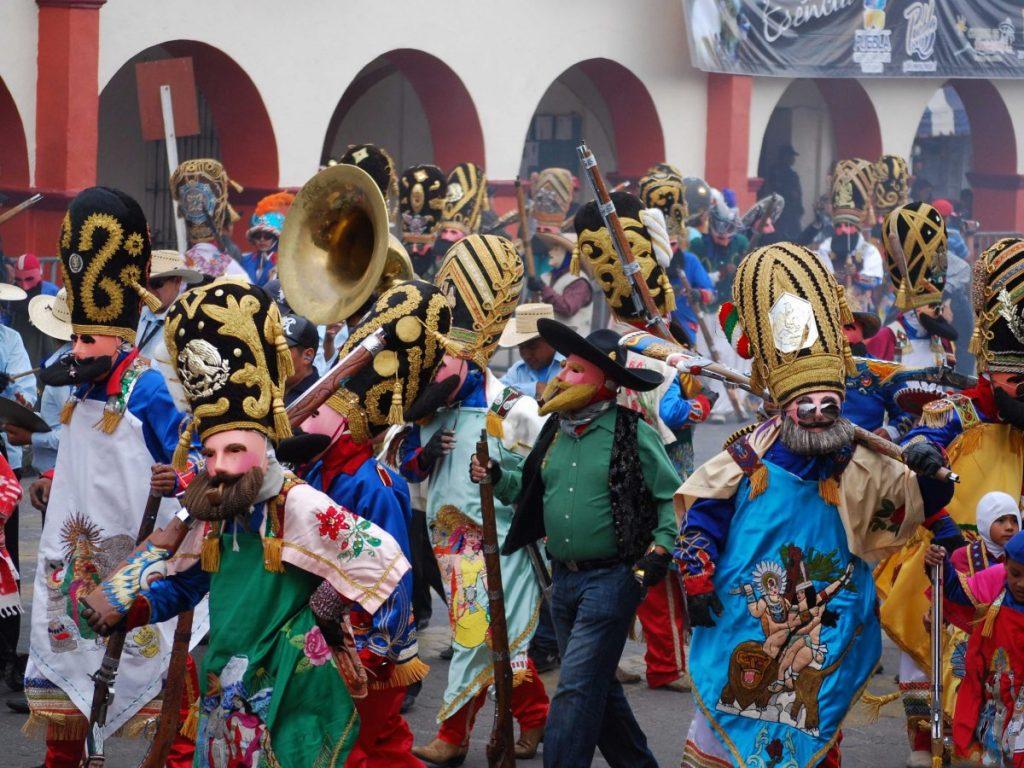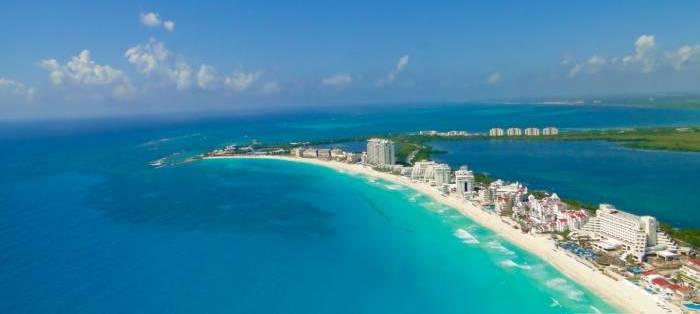10 facts that you may not know about Cancun (Part 2)
Behind the fruit cocktails, vibrant nightlife, and hot weather, lies a city that is growing rapidly and constantly changing, a city with many stories to tell. With that in mind, here for you is the second half of our 10 facts that you may not know about Cancun. If you have not yet read part one please click here.
6. Two huge hurricanes have hit Cancun

Hurricanes in Cancun
On 8 September 1988, a tropical depression began to form close to the Windward Islands in the Atlantic Ocean, a few days later this mix of high and low air pressure had turned itself into a hurricane and was given the name Gilbert. The following day, Gilbert struck Jamaica and began moving north increasing in speed and force. On 14 September, Gilbert reached Mexican shores hitting Cancun and the Riviera Maya as a category 5 hurricane, the highest category possible and the most powerful Atlantic hurricane ever registered at the time, with wind speeds of 185 miles per hour.
Gilbert moved its way up the Gulf of Mexico taking the lives of over 300 people and leaving in its wake billions of dollars of damage. Reaching the Unites States, it provoked 29 tornados in Texas and finally died down in Oklahoma after almost nine days of destruction.

Cancun’s Hotel Zone after Wilma had struck
Seventeen years later, on 21 October 2005, category 4 hurricane Wilma hit the Yucatan Peninsula with winds of over 150 miles per hour. Some areas of the region were battered continuously for over 70 hours. One reason Wilma was particularly destructive was because of a cold front from the north that prevented the hurricane from moving along the Gulf of Mexico. Wilma remained ‘stationary’ in Cancun and slowly laid waste to everything in its path.
While Cancun’s city centre and hotel zone was very different to the one that hurricane Gilbert met, the same feelings of anguish were felt when Wilma struck. Not to be beaten, the people of Cancun stood firm, put on a brave face, and continued their daily activities as effectively as possible.
7. Cancun means snake’s nest

Something that is perhaps overlooked by many visitors is the meaning of the word Cancun. Kaank’uun in Mayan means ’place of the golden snake’, derived from the Mayan words Kan meaning yellow, four, or snake, and Kun meaning pot, spell, or nest. It is said that the Mayan’s gave this coastal area that name because, as the sun rose it would illuminate the white sands creating a golden snake-like form on the horizon. Snakes figured heavily in Mayan culture as a symbol of power and energy and were therefore held in the highest regard. The joining of the two words Kan and Kun has since been changed to the Spanish spelling, Cancún.
8. The sand in Cancun doesn’t burn your feet

Cancun’s white sand
One of the most unexpected things about the beaches in Cancun is that even under temperatures of 40°C (104°F) the sand remains relatively cool. This will come as a surprise to those that are used to the beaches of the Pacific or eastern Atlantic, where the larger grain, golden sands are uncomfortable to walk on under such heat. The reason for this phenomenon is even more unexpected.
Naturally the sand of a beach depends on the geology of the surrounding area, for example volcanic beaches tend to have dark coloured sand; while the beaches of the Caribbean – like Cancun’s – commonly have white sand due to the erosion of the large coral reefs that are found in its waters.
However there is another catalyst that produces this white sand and that is the parrotfish. These fish – whose beak-like teeth resemble that of the bird it is named after – gnaw away algae and dead coral, and as they do not have a stomach, what they eat passes straight through their large intestine, exploding in a cloud of sand out of their behinds. The parrotfish can excrete over 800 pounds of “white sand” per year. Yes, that’s right, those fine grains of sand that feel so good in-between your toes came out of the back of a fish.
9. Cancun is a baseball city
 While the first sports that come to mind when thinking of Cancun are likely to be aquatic ones, the most popular sport in the city doesn’t take place at the seaside but at the Beto Avila stadium, home to 12-times Mexican baseball league champions Tigres of Quintana Roo. Tigres were actually founded in Mexico City in 1955, moved to the city of Puebla from 2002 to 2006, before finally settling in Cancun in 2007 where the team have built up quite a following in the city in a short space of time, no doubt helped by winning the championship in 2011 and 2013.
While the first sports that come to mind when thinking of Cancun are likely to be aquatic ones, the most popular sport in the city doesn’t take place at the seaside but at the Beto Avila stadium, home to 12-times Mexican baseball league champions Tigres of Quintana Roo. Tigres were actually founded in Mexico City in 1955, moved to the city of Puebla from 2002 to 2006, before finally settling in Cancun in 2007 where the team have built up quite a following in the city in a short space of time, no doubt helped by winning the championship in 2011 and 2013.
Even if you’re not a major baseball fan, the fun, family-friendly atmosphere where you can take in a game while enjoying a wide variety of Mexican foods, makes it a highly recommended and authentic Cancun experience.
10. The world’s second largest coral reef
About 32 miles north of Cancun is Cabo Catoche, the most northerly point of the Yucatan Peninsula and where the European conquistadores first touched Mexican soil. It is also where the world’s second largest coral reef begins. The Mesoamerican Reef is only beaten in size by Australia’s Great Barrier Reef, and stretches the length of the Mexican Caribbean coast all the way down to Central America. This makes our coastline the perfect spot to see an abundance of sea life. Like Cancun, the beaches of the Riviera Maya are an ideal place to snorkel or scuba dive. At the Grand Oasis Tulum the coral reef is just yards from the shore. Here you will find a host of colourful fish, making the hotel’s free snorkel tour a must for all those visiting.
Well there you have it, ten facts that you may not have known about Cancun. We hope we have taught you a thing or two about this beautiful gem we call home, and that it has perhaps inspired you to come and visit us for the first time or once again. Well rest assured that here in Cancun we will welcome you with open arms and huge smiles just as we have done for the last 45 years!
Related Posts:10 facts that you may not know about Cancun (Part 2)
Continue informing yourself...

Estados de México

Cinco de Mayo

10 signs you need a holiday in Cancun



